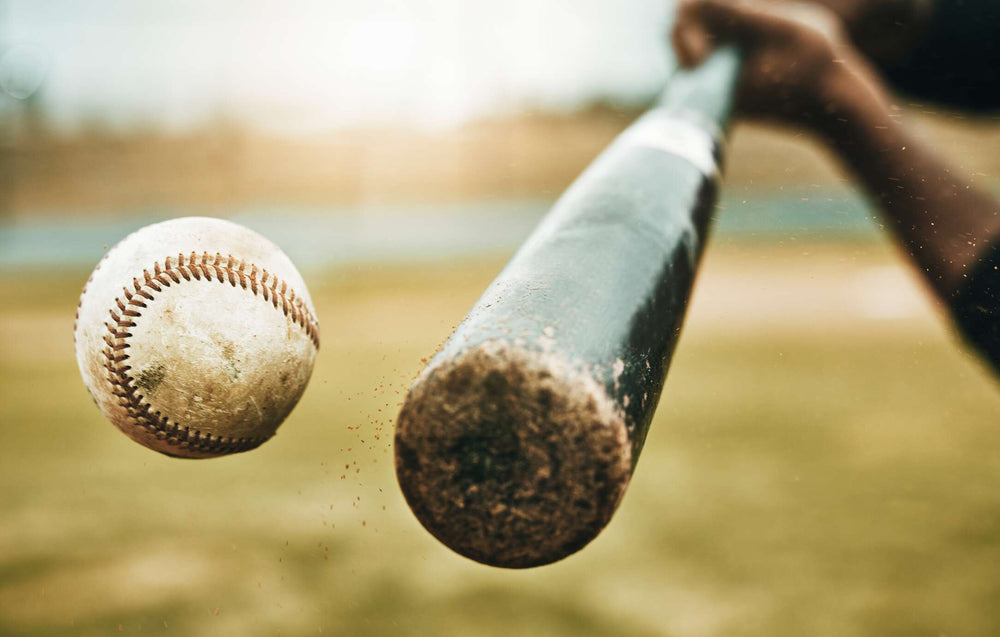
Youth Baseball Hitting Drills: Helping Players Build their Batting Abilities
At a Glance: Effective youth baseball hitting drills combine fundamental skill development with engaging practice methods. The key is starting with proper stance and grip mechanics, then progressing through increasingly complex drills that build muscle memory and confidence.
Learning to hit a baseball effectively is one of the most challenging and rewarding skills a young player can master. Developing proper hitting mechanics creates the foundation for long-term success at the plate. While natural talent plays a role, it's the consistent practice of fundamental techniques that transforms promising young athletes into confident, capable hitters.
With hitting drills featuring Plate Crate’s training aids, youth players can develop their batting skills in an engaging, age-appropriate way. By following step-by-step techniques, you’ll teach proper stance, grip, and swing mechanics, along with fun practice routines that keep young players motivated. Whether you're a baseball coach looking to improve your team's offensive performance or a parent helping your child find their sweet spot at the plate, these youth baseball drills will help players make consistent contact and drive the ball with confidence.
Foundation Drills: Building Proper Mechanics
Every great hitter starts with mastering the fundamentals. While natural talent plays a role, proper mechanics form the backbone of consistent hitting success.
Proper Batting Stance Fundamentals
Start with feet shoulder-width apart, with the back foot slightly closer to home plate than the front foot. Weight should be distributed evenly on the balls of your feet, knees slightly bent. Keep your hips square to the plate, allowing for rotation during your swing. Your head should remain still and level, with eyes focused on the pitcher's release point.
Grip Technique Essentials
There are many different ways to grip a bat, but there are some common techniques that can help you develop effective batting habits. Two primary methods used include:
Door Knocking (Traditional) Grip
For this grip, the hands are rotated slightly so the middle knuckles of the top hand align with the large knuckles of the bottom hand, creating a more open position. The bat should rest in your fingers rather than your palms, allowing for a more relaxed grip, better bat control, and quicker wrist action.
Box Grip
This less common grip positions both hands so that the middle knuckles of the top and bottom hand line up, creating a straight “box” alignment. This technique promotes a more compact, level swing and consistent bat control.
These fundamentals need constant practice to become second nature. Developing muscle memory through repetition will help young players maintain proper form even under game pressure.
Stationary Hitting Drills
The batting tee remains one of baseball's most valuable and underappreciated training tools. When executed properly, a simple drill on the tee can build the foundation for a consistent, powerful swing. While they are especially useful for younger hitters, tee drills can benefit many age groups looking to grow their game.
Basic Tee Work
The goal of tee work is to develop muscle memory for maintaining a level swing path regardless of pitch location.
-
Position the ball at belt height and slightly forward of the hitter's front foot.
-
Focus on keeping the head still and driving through the ball with proper hip rotation.
-
Once basic mechanics are mastered, vary the tee height and position to practice hitting pitches in different locations.
Soft Toss Drills
These drills naturally progress from tee work, adding timing elements while maintaining controlled conditions.
-
Start with straight-on tosses before advancing to angled tosses that simulate different pitch trajectories.
-
Keep the pace slow and steady initially, gradually increasing speed as the hitter demonstrates solid contact.
-
Remember to limit each drill session to 15-20 quality swings. It's better to take fewer swings with perfect form than many swings with flaws.
Line Drive Pro Trainer Drill
Purpose: This drill helps young hitters (ages 6–14) develop proper bat path and barrel control to consistently hit line drives. The Line Drive Pro reinforces correct baseball swing mechanics by providing instant feedback on launch direction.
Step 1: Attach the Line Drive Pro to the barrel of the bat and place a Pro Tee in the center of the strike zone at waist height. Position the hitter in their normal batting stance with balanced weight and proper grip.
Step 2: Have the player load as usual and swing with the goal of propelling the ball out of the trainer in a straight line toward the pitcher’s mound (or net if indoors).
Step 3: The ball trajectory from the Line Drive Pro Trainer shows if the swing is on plane:
-
Straight Line: Correct bat path and level swing.
-
Upward or Downward Angle: Adjust swing to stay level through the hitting zone.
Step 4: Perform 10–12 swings per set. Start slow and encourage the player to focus on maintaining smooth follow-through and keeping the barrel in the hitting zone longer.
Step 5: Challenge the hitter to hit 8 balls out of 10 on a straight trajectory. Once the player demonstrates consistency off a tee, increase the tee height or progress to soft or front toss. Continue using the Line Drive Pro Trainer for instant feedback.
Clip Hitter Strength Drill
Purpose: The Clip Hitter is designed to promote proper finger and palm pressure on the bat handle, helping young hitters maintain a firm grip without tension. This batting drill builds muscle memory for consistent swings and better control at contact.
Step 1: Attach the Clip Hitter to the bat handle following product instructions. Position a Pro Tee at waist height in the center of the strike zone.
Step 2: The player should assume a normal stance and focus on gripping with fingers, not palms, to keep wrists loose and relaxed. Start with 10 controlled dry practice swings, adjusting so that fingers rest naturally around the Clip Hitter.
Step 3: Place a ball on the tee. The player hits 10–15 balls, concentrating on maintaining consistent grip pressure throughout the swing. Check for signs of over-gripping (tight forearms) and correct as needed.
Step 4: Once comfortable, move to soft toss for 10–12 reps. The Clip Hitter should stay in place, reminding the player to maintain finger pressure and stay relaxed.
Step 5: For an added challenge, set up a small target zone in the net and track how many solid line drives the hitter can make in 10 swings.
Pro Hollow Contact Accuracy Drill
Purpose: The Pro Hollows are lightweight, hollow practice balls that help hitters focus on hand-eye coordination, swing control, and consistent barrel contact. Because they are lighter than regular baseballs, they exaggerate mishits, making it easy for players to see and correct mistakes.
Step 1: Place a Pro Hollow on a Pro Tee positioned in the middle of the strike zone.
Step 2: The player takes a proper stance and completes 8-10 hits, aiming for smooth, controlled swings and solid line drives.
Step 3: For a soft toss drill, a coach or parent tosses a Pro Hollow underhand to the player. The player should focus on timing and aim to hit the ball square to reinforce hand-eye coordination.
Step 4: For an added challenge, set up a net or bucket as a target zone. Have the player hit 10 Pro Hollows and try to land at least 7 in the target area.
Game-Ready Training Progression
A structured training progression is essential for developing young hitters. By following a systematic approach that builds skills incrementally, baseball players can develop proper mechanics and bat speed while maintaining their enthusiasm for the game.
Building a Hitting Practice Routine
Start each practice with a 10-minute warm-up focusing on basic mechanics. Players should begin with dry swings, practicing their stance and stride before moving to tee work. Progress through soft toss drills, focusing on contact quality rather than power. End each session with live batting practice, applying the day's learning points in game-like situations.
Identifying and Fixing Challenges
Watch for these common issues:
-
Dropping the back shoulder during the swing
-
Stepping away from the plate
-
Pulling the head off the ball
-
Gripping the bat too tightly
Remember that every youth baseball player develops at their own pace, so adjust expectations accordingly. Track development using simple metrics like contact rate and quality of contact rather than focusing solely on results. Regular check-ins against fundamental benchmarks will help maintain focus on long-term development rather than short-term results.
Take Your Batting Skills to the Next Level with Plate Crate
Mastering youth baseball hitting fundamentals requires dedication, proper technique, consistent practice, and the right drills with the right training approach. By incorporating these fun baseball drills into regular practice sessions, young players can develop proper mechanics, build muscle memory, and gain the confidence needed to succeed at the plate. Stay patient and positive as your young player develops. With consistent practice and the right tools, you'll see remarkable improvement in their hitting performance.
To help your young athlete on their journey to hitting excellence, having the right training tools makes all the difference. Plate Crate's monthly subscription boxes include bold baseball apparel and specialized training aids that are perfect for practicing these drills. Check out Plate Crate’s subscriptions or view our full selection of training aids to help your player find the tools they need to develop proper mechanics and build confidence.





